Guidelines for patients following Total Shoulder Replacement
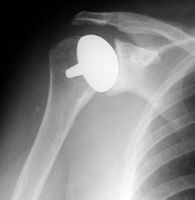
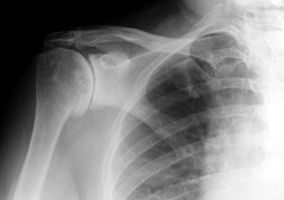
Introduction
Following your operation you will have a scar approximately 3 inches long on the front of your shoulder.
Your arm will be supported in a sling and a physiotherapist will teach you how to take it on and off to do your exercises. You will be in hospital for about 2-3 days.
General guidelines
- Pain: A nerve block is usually used during the operation which means that immediately after the operation the shoulder and arm may feel numb. This may last a few hours. After this your shoulder will be painful and this may last a few weeks. You will be given painkillers to help this whilst in hospital. These should be continued after you are discharged home.
- Wearing a Sling: You will return from theatre wearing a sling. This is used for the first 3 weeks following your operation. It is important that you remove the sling to exercise. You can stop wearing the sling as soon as you feel comfortable.
- The Wound: Keep the wound dry until it is healed. This normally takes 10 to 14 days. Your stitch is dissolvable and needs only to be trimmed at your clinic visit.
- Driving: This is usually possible after about three weeks, but will be dependant on your recovery.
- Returning to work: This is dependent upon your occupation. Light activities which involve using your arm in front of your body may be resumed after about three weeks, but if your job involves heavy lifting you will be off work for up to three months.
- Leisure activities: Gentle swimming and exercises in water can begin at 4 to 6 weeks, Golf at 6 weeks.
- Follow up appointments: You will have an appointment to see the doctor/specialist physiotherapist three weeks after your operation.
- Progress: This is variable and dependant on the amount of movement and the strength of your muscles prior to surgery. Following discharge your pain will slowly decrease and you will become more confident. You will be able to use your arm in front of you for light activities. After six weeks your strength will start to improve.
- Exercises: You will start exercises on the first day after your operation. A physiotherapist will see you to teach you these and progress them. Out patient physiotherapy will be arranged for when you are discharged.
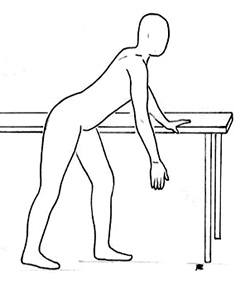
- 1) Stand. Lean forwards. Let your arm hang down. Swing your arm forwards and backwards. Repeat 10 times. (Shown for the right shoulder).

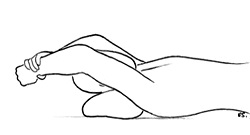
- 2) Lying on your back.
Support your operated arm with the other arm and lift it up overhead.
Repeat 10 times.(Shown for right shoulder) 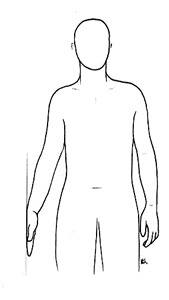
- 3) Stand sideways with operated arm against a wall. Keep the arm close to your side, and push the hand against the wall, hold for 5 seconds. Repeat 10 times.
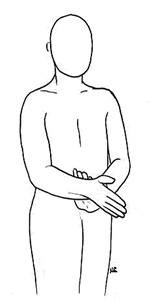
- 4) Standing, with elbow flexed to 90 degrees, and held close to body, grasp the wrist of the affected arm with the good hand. Attempt to move the hand of the affected arm inward resisting the motion with the good hand. Keep the affected arm still. Hold for 5 seconds. Repeat 10 times.
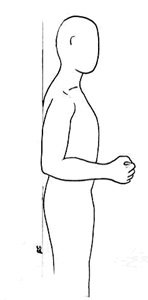
- 5) Standing with your back against a wall. Keep the arm close to side, elbow bent. Push the elbow back into the wall. Hold for 5 seconds. Repeat 10 times.
